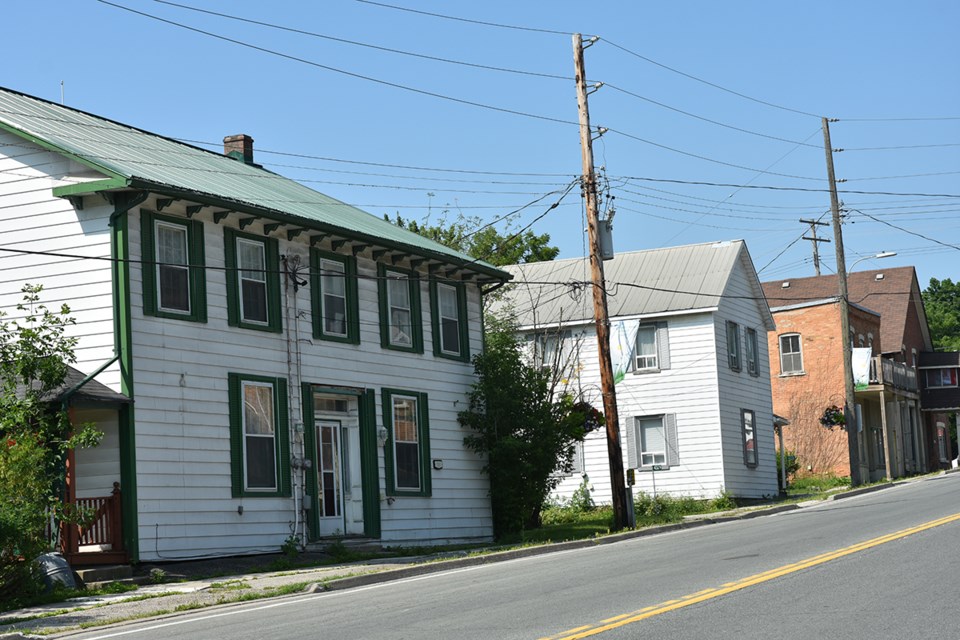The Bradford West Gwillimbury Heritage Committee, in its final session before the end of this term of office, received a presentation on the feasibility of establishing a Heritage Conservation District (HCD) in the hamlet of Bond Head.
The consultants, Archaeological Research Associates Ltd., recommended moving forward with an HCD — a tool that has been used in other municipalities to preserve heritage structures and streetscapes.
While internal renovations and changes not visible from the road are permitted without regulation, the HCD is used to preserve facades and the character of an historic area.
The committee approved the report and forwarded it to council, with a recommendation to proceed with Phase 2, the actual Heritage Conservation District Study. It will be the new council, elected Oct. 22, that receives the report and recommendation.
A three-phase HCD study process was set in motion by the sitting council. The town hired Archaeological Research Associates Ltd in November 2017 to conduct the background study, “to assess the heritage characteristics” of old Bond Head, “and determine if the area merits designation as a heritage conservation district pursuant to the Ontario Heritage Act.”
The conclusion: with 37 of the existing 240 structures already on a heritage registry, and at least one designated heritage building, the historic core of Bond Head meets all the criteria to be considered for an HCD.
Two possible maps of the boundaries of an HCD were included in the report, focusing largely on structures fronting on County Road 27 and County Road 88/Line 7. The only difference between the two was how far east the boundaries extended.
“Is it just homes in the district? Can it be barn structures, sheds, trees?” Mayor Rob Keffer asked consultants at the meeting.
“All those things,” including churches, institutional buildings, benches, parks and plaques, can be included, said consultant Lyndsay Benjamin. “The intention is to preserve the heritage of the village.”
Lynda Usher asked if architectural controls will be placed on new home construction to ensure the new homes match the architecture of historic Bond Head, and are “sympathetic” to the historic forms.
“Will there be some guidelines for developers?” Usher asked.
“Those types of policies and guidelines would be part of the HCD plan,” after Phase 2 of the study looks at the characteristics of the hamlet’s historic architecture, said Benjamin.
“The draft plans (of subdivision) have to be in accord with that,” agreed Ryan Windle, manager of community planning for the Town of BWG. Windle also pointed out there is already funding in the town budget for the Phase 2 Study, which will determine the actual boundaries of an HCD.
The committee was told that the report and their recommendation to proceed will likely come before the new council in December.
After the presentation, the committee also heard from local Bond Head resident and historian, Dr. David Chambers, who provided a warning about the limitations of HCDs.
“The biggest challenge is not creating (an HCD), it’s managing them after they’ve been created,” said Chambers. As an example, he cited the Cookstown HCD, which classified all buildings within HCD boundaries as A, B, C or D — with ‘A’ being the most deserving of protection, and ‘D’ the least.
The issue, he said, is that ‘D’ buildings are being demolished even when they contribute to the streetscape. In at least one case, the replacement home is “inappropriate… has nothing to do with the heritage streetscape.”
“How can this happen? How can these tragedies be avoided?” he said.
Chambers recommended policies that would allow the Heritage Committee or heritage consultant to override the initial assessment within the HCD, or at least provide amendments. “The Heritage Conservation District should be about preserving, not demolishing.”

